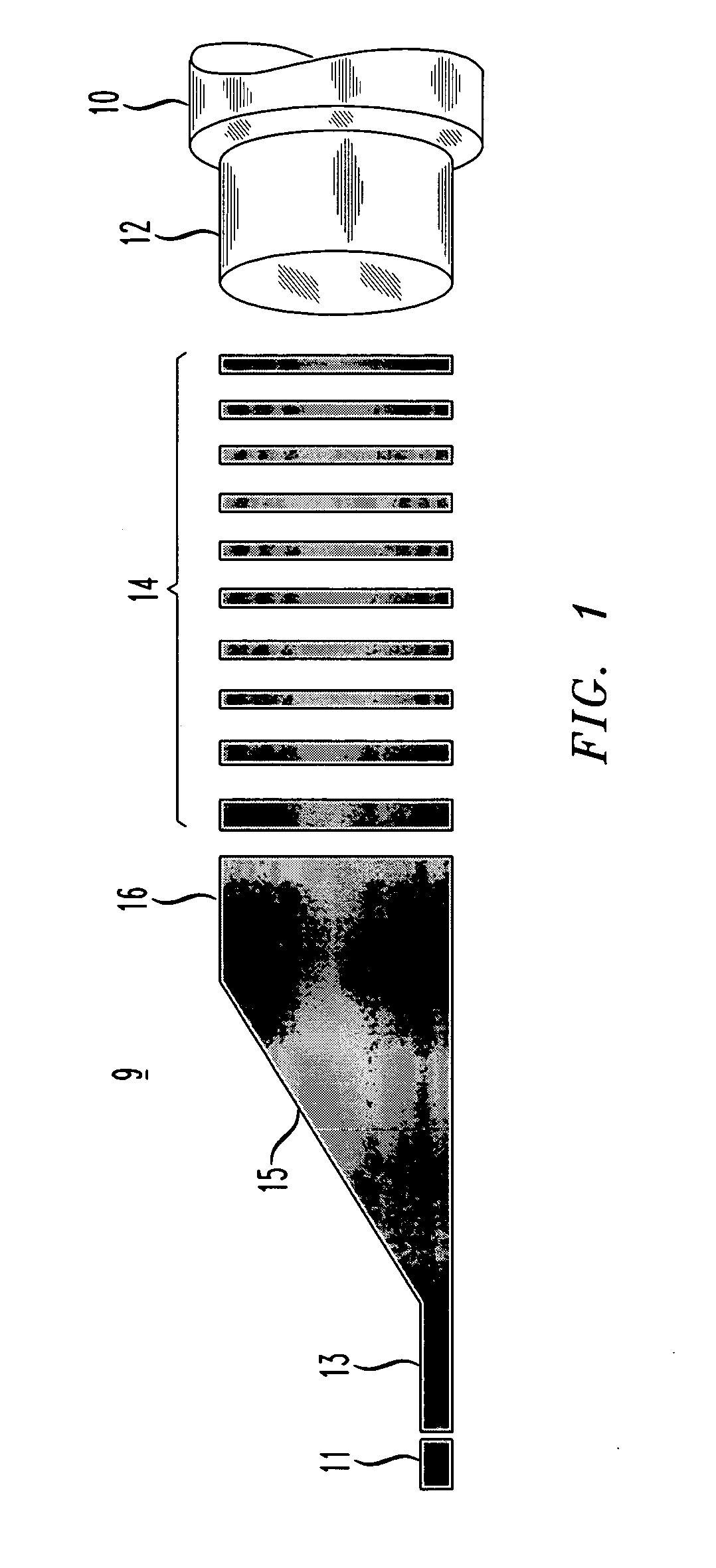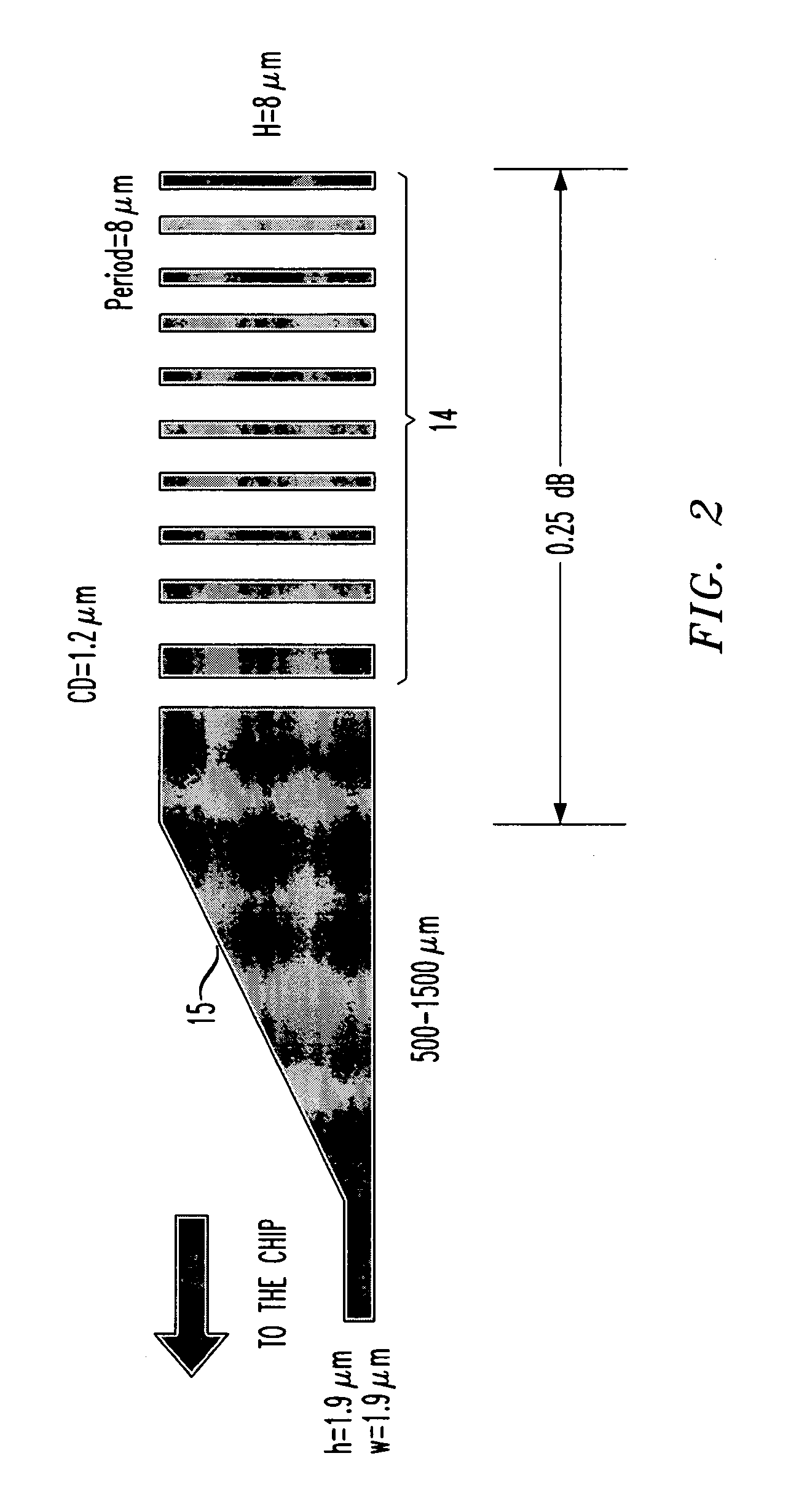Method and apparatus for compactly coupling an optical fiber and a planar optical waveguide
- Summary
- Abstract
- Description
- Claims
- Application Information
AI Technical Summary
Benefits of technology
Problems solved by technology
Method used
Image
Examples
example 1
[0028]FIG. 2 schematically illustrates an arrangement for coupling an optical fiber having an 8 micrometer core with a high 6% delta planar waveguide of dimension 1.9×1.9 micrometers. The segmented section 14 comprises 10 high delta segments coupling from the fiber core to a tapered section 15. Each segment has a cross section of 8×8 micrometers and successive segments are periodically spaced 8 micrometers apart (center-to-center). Successive segments have increasing thickness in the longitudinal direction from the fiber to the tapered section so that light from the fiber experiences an increasing effective index as it approaches the continuous high delta tapered section. The tapered section includes a 110 micrometer length without taper and a 250 micrometer length without taper and a 250 micrometer region of linear taper down to planar waveguide dimension. The coupling loss is about 0.25 dB from input segment to the beginning of the linear taper. The loss in the adiabatic taper dep...
example 2
[0029] For coupling an optical fiber to 4% delta planar waveguide, a similar arrangement shown in FIG. 3 can have 7×7 micrometer segments periodically spaced by 9 micrometers. Total coupling loss is about 0.18 dB.
example 3
[0030]FIG. 4 schematically illustrates an arrangement using a tapered section 15 that is step tapered rather than continuously tapered. It uses ten 7×7 micrometer segments to couple from a fiber (not shown) to a step tapered section 15. The section 15 is tapered downward 0.43 micrometers in each of ten 25 micrometer steps. The total coupling loss is about 0.35 dB for coupling to a 4% delta planar waveguide.
[0031] It can now be seen that the invention includes a device for optically coupling an optical fiber to a planar waveguide. The device comprises a waveguiding structure comprising a segmented guiding position and a tapered guiding portion, both guiding portions disposed in a lower refractive index cladding region between the fiber and the planar waveguide.
[0032] The segmented guiding portion comprises a series of spaced apart segments of higher refractive index material. The segments have longitudinal cross sections substantially equal to the cross section of the fiber core, a...
PUM
 Login to View More
Login to View More Abstract
Description
Claims
Application Information
 Login to View More
Login to View More - R&D
- Intellectual Property
- Life Sciences
- Materials
- Tech Scout
- Unparalleled Data Quality
- Higher Quality Content
- 60% Fewer Hallucinations
Browse by: Latest US Patents, China's latest patents, Technical Efficacy Thesaurus, Application Domain, Technology Topic, Popular Technical Reports.
© 2025 PatSnap. All rights reserved.Legal|Privacy policy|Modern Slavery Act Transparency Statement|Sitemap|About US| Contact US: help@patsnap.com



